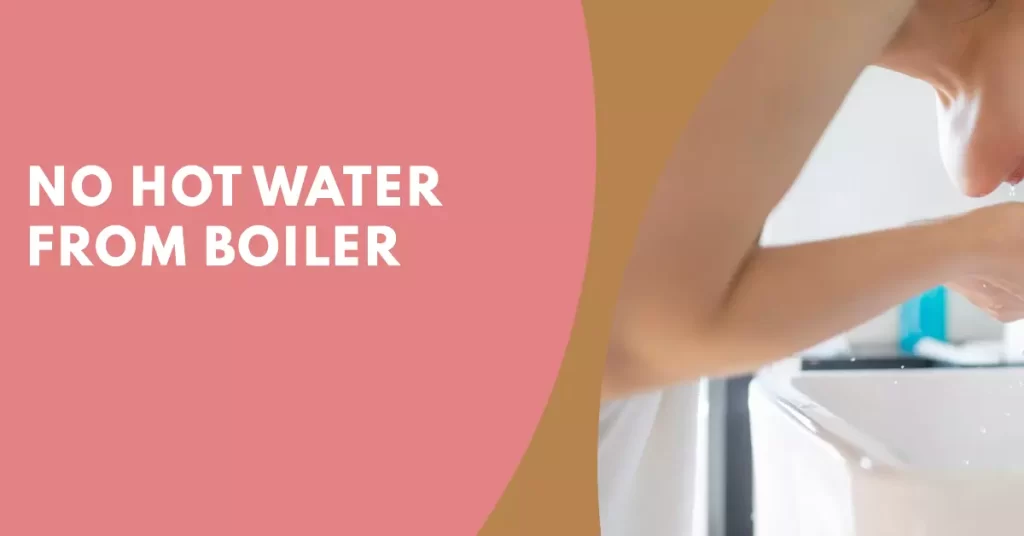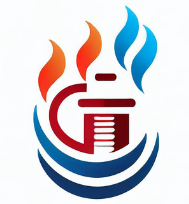Welcome to our comprehensive troubleshooting guide for boilers that are not heating water. If you’re experiencing this issue, we understand the frustration it can cause, especially during colder months when a reliable heating system is essential for your comfort. In this article, we will delve into the possible causes of no hot water from a boiler and provide step-by-step solutions to help you resolve the problem efficiently.

No Hot Water From Boiler
A boiler not producing hot water can result from issues like a faulty thermostat, preventing the heating element from turning on, or insufficient water pressure. Airlocks, broken diverter valves, and defective pumps are also potential culprits. Checking and adjusting boiler pressure if too high or low can also restore hot water capabilities in a combi boiler.
Understanding the Importance of Proper Boiler Functioning
Before we delve into the troubleshooting process, let’s briefly discuss the significance of a well-functioning boiler. A boiler plays a crucial role in heating water for various applications, including domestic use, heating systems, and industrial processes. When a boiler fails to heat water, it not only affects your comfort but can also disrupt daily activities and pose potential risks.
Domestic Hot Water (DHW) systems heat up cold water from the inlet and deliver it to taps, faucets, showers, and other systems where hot water is required. Some systems store the heated water in a cylinder for later use.
Common Causes of a Boiler Not Heating Water
To effectively troubleshoot the issue, it’s essential to identify the underlying cause. Here are some common reasons why your boiler may not be heating water:
1. Thermostat Issues
A malfunctioning thermostat can prevent your boiler from receiving the signal to heat the water. Ensure that your thermostat is set to the desired temperature and is in proper working condition.
2. Low Water Pressure
Insufficient water pressure within the boiler system can hinder the heating process. Check the pressure gauge on your boiler, and if it reads below the recommended level, you may need to refill the system or address any water leakages.
3. Airlocks
Airlocks can occur within the system and prevent the flow of water to the boiler. To resolve this, you can bleed the radiators and release trapped air. It’s essential to follow the manufacturer’s instructions or seek professional assistance to avoid any damage.
4. Faulty Motorised Valves
Motorized valves control the flow of water through the system. If these valves become faulty, it can disrupt the heating process. Inspect the valves for any signs of damage or blockages and consider replacing them if necessary.
5. Pilot Light or Ignition Problems
For boilers that rely on a pilot light or ignition mechanism, issues with these components can result in a lack of heating. Check if the pilot light is lit and functioning correctly. If not, relight it according to the manufacturer’s instructions. In case of an ignition system, ensure that it is in good condition and firing up properly.
6. Circulation Pump Malfunction
The circulation pump is responsible for circulating hot water throughout the system. If the pump is faulty or blocked, it can hinder proper water circulation and lead to no heating. Inspect the pump for any visible issues or consult a professional for assistance.
Step-by-Step Solutions
Now that we have identified the potential causes, let’s explore step-by-step solutions to help you get your boiler back to heating water efficiently:
- Check the Thermostat: Ensure that the thermostat is set to the desired temperature and functioning correctly. If necessary, replace the batteries and calibrate it according to the manufacturer’s instructions.
- Inspect Water Pressure: Check the pressure gauge on your boiler and verify if it is within the recommended range. If not, refill the system following the manufacturer’s guidelines or seek professional assistance.
- Bleed Radiators: If airlocks are suspected, bleeding the radiators can help release trapped air. Begin with the lowest radiator and use a radiator key to open the bleed valve slightly. Close the valve once water starts flowing steadily.
- Examine Motorized Valves: Inspect the motorized valves for any visible signs of damage or blockages. Clean or replace the valves as needed, following the manufacturer’s recommendations.
- Ensure Pilot Light or Ignition Function: If your boiler relies on a pilot light, ensure that it is lit and burning consistently. For ignition systems, check for any faults and seek professional assistance if necessary.
- Inspect Circulation Pump: Examine the circulation pump for any visible issues such as blockages or damage. If needed, consult a professional to repair or replace the pump.
Conclusion
In this troubleshooting guide, we have explored the potential causes behind a boiler not heating water and provided step-by-step solutions to help you resolve the issue. Remember, if you encounter complex problems or are unsure about performing any maintenance tasks, it’s always advisable to seek professional assistance.
By following the guidelines outlined in this article, you can restore your boiler’s functionality and enjoy a comfortable, warm environment once again. Remember, a well-maintained boiler is crucial for efficient water heating. Regular maintenance, such as annual servicing and prompt repairs, can significantly extend your boiler’s lifespan and ensure optimal performance.
If you’re still experiencing issues after attempting the troubleshooting steps, we recommend contacting a gas safe registered heating engineer or a reputable service provider, such as Hometree, to assess and resolve the problem effectively. Stay warm and comfortable throughout the year
*The information in this article should be used for general guidance only. Full details are on the link in the footer to our disclaimer page. Always discuss your requirements with a competent and suitably qualified professional before undertaking any work.
